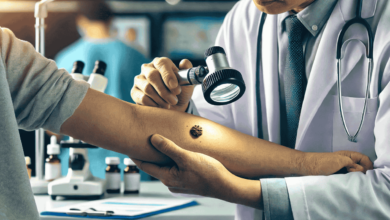Why Is ACLS Training Important for Sudden

Every year, over 356,000 people in the U.S. suffer from sudden cardiac arrest outside of hospitals, according to the Cleveland Clinic. Without quick action, most of them don’t survive. It is where the advanced ACLS course for professionals becomes lifesaving. Healthcare professionals learn how to respond fast, perform high-quality CPR, use a defibrillator, and give lifesaving medications in ACLS training.
The advanced ACLS course for professionals also teaches medical teams the skills to handle emergencies with confidence. By the end of this blog, we will understand why ACLS training is so important for treating sudden cardiac arrest and saving lives.
Why Is ACLS Training Important for Sudden Cardiac Arrest?
The advanced ACLS course for professionals teaches advanced techniques to manage life-threatening heart conditions like cardiac arrest, stroke, and other medical emergencies. ACLS goes beyond basic CPR by teaching professionals how to use advanced medical skills to save lives. The reasons why ACLS training is important for sudden cardiac arrest are:
- Recognize and Respond Quickly
The first step in saving a life during Sudden Cardiac Arrest (SCA) is recognizing it immediately. ACLS training allows medical workers to identify warning signs, such as a sudden collapse, lack of pulse, and absence of normal breathing. ACLS-trained professionals know that every second matters in these cases. They are trained to act fast, check for a pulse, confirm the condition, and start lifesaving treatment immediately. They will thus improve the patient’s chances of survival.
- Provide High-Quality CPR
Performing high-quality Cardiopulmonary Resuscitation (CPR) is one of the most important actions in treating SCA. The advanced ACLS course for professionals teaches healthcare providers how to deliver strong, steady chest compressions to keep blood flowing to the brain and other vital organs. It also covers rescue breathing, ensuring oxygen reaches the lungs. Effective CPR helps buy time until the heart can be restarted. Weak or incorrect compressions can reduce survival chances. ACLS ensures that professionals follow the best CPR guidelines for maximum effectiveness.
- Use a Defibrillator Effectively
A defibrillator is a lifesaving device that delivers an electric shock to the heart to restore a normal rhythm. The advanced ACLS course for professionals teaches professionals how to properly use both manual and automated external defibrillators (AEDs). The training covers how to quickly recognize shockable heart rhythms, apply the defibrillator pads, and safely deliver a shock at the right moment. Using a defibrillator within minutes of cardiac arrest can greatly increase survival rates. ACLS ensures that healthcare providers can use defibrillators confidently and effectively in emergencies.
- Interpret Heart Rhythms
A key skill in ACLS training is learning to read and interpret an electrocardiogram (ECG). ECGs display the electrical activity of the heart, allowing healthcare professionals to identify life-threatening arrhythmias. Dangerous rhythms such as ventricular fibrillation (VFib) and ventricular tachycardia (VTach) can lead to sudden cardiac arrest if not treated quickly. By understanding ECG readings, professionals can determine the best course of action, whether it’s defibrillation, medications, or other advanced treatments. Accurate heart rhythm interpretation helps in making the right medical decisions under pressure.
- Administer Lifesaving Medications
In some cases, medications are needed to stabilize a patient suffering from sudden cardiac arrest. ACLS training teaches professionals how to use emergency drugs effectively. For example, epinephrine helps restart the heart. Amiodarone is used in cases of persistent ventricular fibrillation or pulseless ventricular tachycardia that don’t respond to initial defibrillation. Atropine is used to increase a dangerously slow heart rate. These medications must be given at the right time and in the correct doses to be effective. ACLS ensures healthcare providers know when and how to administer these drugs, helping to improve survival chances and prevent complications.
- Ensure Proper Airway Management
The brain and other organs need a constant supply of oxygen to function properly. ACLS training teaches professionals advanced airway management techniques to keep oxygen flowing during an emergency. These techniques include bag-mask ventilation, which manually helps a patient breathe, and intubation, where a tube is inserted into the airway to deliver oxygen directly. Keeping the airway clear is of great importance in cardiac arrest cases, as lack of oxygen can cause brain damage within minutes. The advanced ACLS course for professionals ensures that healthcare professionals can manage a patient’s breathing effectively in life-threatening situations.
How to Recognize Sudden Cardiac Arrest
Sudden cardiac arrest is a medical emergency. You need to act fast to help someone survive. Here’s what to look for and what to do based on the steps recommended in the ACLS guidelines:
- Abrupt Collapse and Unresponsiveness: Sudden cardiac arrest often presents as a person collapsing unexpectedly and becoming unresponsive. ACLS protocols emphasize that immediate recognition is important to initiate the Chain of Survival.
- Absence of Normal Breathing or Only Gasping: Victims may stop breathing normally or show agonal gasps. According to ACLS guidelines, recognizing this early helps differentiate true cardiac arrest from other conditions.
- No Detectable Pulse Within 10 Seconds: ACLS-trained responders are taught to check for a pulse (preferably carotid) quickly and, if absent within 10 seconds, begin high-quality CPR immediately.
- Importance of Early CPR and Defibrillation: The sooner chest compressions and defibrillation are initiated, the higher the chances of survival. ACLS stresses minimizing delays to shock delivery in shockable rhythms like VF/pulseless VT.
- Use of Monitoring Tools and Team Communication: In clinical settings, recognizing changes on cardiac monitors (e.g., sudden onset of ventricular fibrillation) and effective communication among team members are important for immediate ACLS response and improved patient outcomes.
The Lifesaving Impact of ACLS Training
Sudden cardiac arrest is a life-threatening emergency that requires quick and skilled action. The advanced ACLS course for professionals gives healthcare professionals the knowledge and confidence to respond effectively. It teaches them how to recognize cardiac arrest, perform high-quality CPR, use a defibrillator, and give lifesaving medications. These skills help improve survival rates and save more lives.
In real-life situations, whether in a hospital, ambulance, or emergency room, ACLS-trained professionals make a difference. If you work in healthcare, ACLS training prepares you to act fast, stay calm, and save lives. The more people trained in ACLS, the better the chances of survival for cardiac arrest victims.




